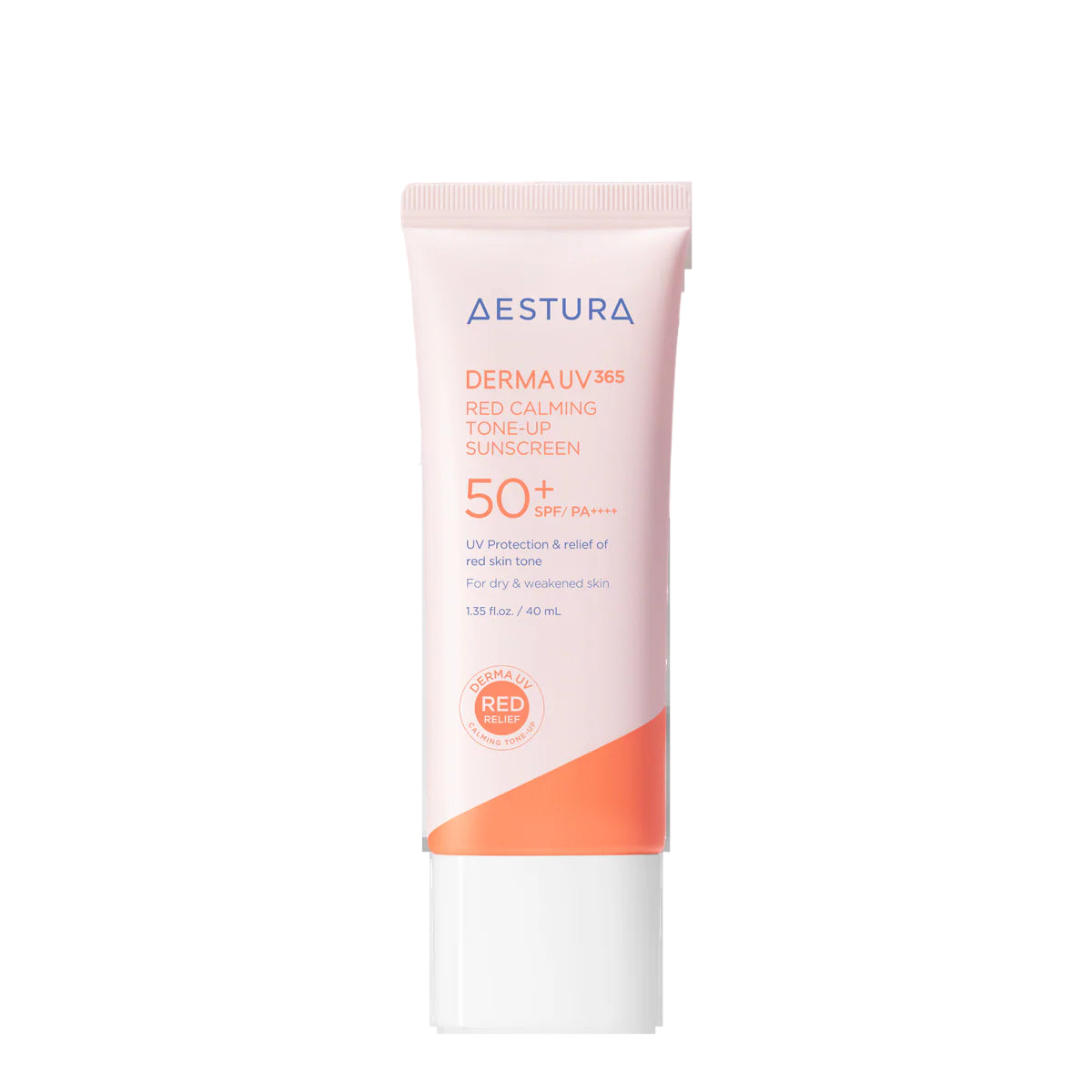








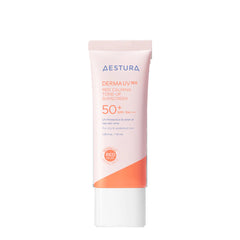
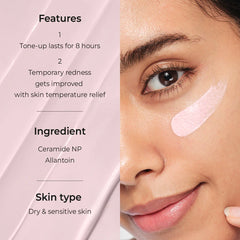
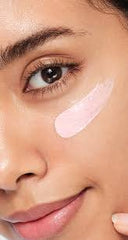
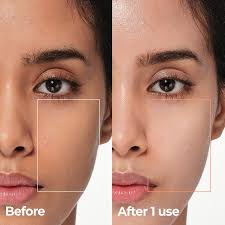





Aestura - Derma UV365 Red Calming Tone-Up Sunscreen 10ml
- Rs. 1,999
- Rs. 1,999
- Unit price
- per
Free Returns
Shipping Time









Description
xThe Aestura Derma UV365 Red Calming Tone‑Up Sunscreen is a multifunctional sun care product aimed especially at people with sensitive, redness‑prone, or delicate skin. It’s designed to offer more than just UV protection: it seeks to visibly calm temporary redness, even out skin tone with a pink tone‑up effect, help the skin barrier, and deliver hydration—all in one lightweight formula.
Key features include:
-
Broad‑spectrum UV protection: SPF 50+ / PA++++, meaning high protection from UVB (which causes sunburn) and very high protection from UVA (which contributes to aging, pigmentation, and barrier damage).
-
Tone‑up effect: a subtle pink tint that helps correct and neutralize redness, giving a more even, radiant look. This “tone‑up” is meant to last for a long time—Aestura claims 8‑hour tone‑up durability after a single application.
-
Calming & barrier care: via ingredients like Ceramide NP and Allantoin, plus hydrating components like hyaluronic acid, glycerin, etc. These help soothe irritation, retain moisture, and reinforce the skin’s protective barrier.
Because of these combined effects, the product positions itself as a hybrid between sunscreen and a makeup base / skin tone corrector / calming skin care treatment, especially for skin that gets red easily (due to sensitivity, heat, environmental stress, etc.).
Key Ingredients & Their Roles
Here are the major actives and supporting ingredients, and how they contribute to performance:
Claims / Clinical Results
From the data provided by the manufacturer (via Aestura) and distributors:
-
A drop of ~3.1 °C skin temperature after a single application (i.e. the skin feels cooler / less heated) when exposed to stress or heat.
-
8‑hour tone‑up lasting effect (i.e. the tone‑up / pink correcting effect is claimed to last for up to 8 hours without fading or major wear) after one application.
These kinds of results are from trials on about 30 adult participants, including sensitive skin panels.
Texture, Finish & Sensory Experience
How you can expect the product to feel, look, and behave when used:
-
The texture is described as lightweight, smooth, lotion/cream hybrid—not thick or heavy. It spreads fairly well.
-
The finish is a tone‑up with pink tint, helping to cover or correct mild redness. It gives a subtle brightening or glow without looking like heavy makeup.
-
Because it uses both chemical filters and physical/partially physical ones (including titanium dioxide), there may be some risk of white cast, especially on deeper or more pigmented skin tones. But the tint and formulation are designed to reduce visible whiteness.
-
The finish seems to be somewhat natural, fresh, luminous, not overly dewy or oily. Many users say it's suitable as a “makeup base” or to use under light makeup.
How to Use
To get the best results out of this sunscreen (including the tone‑up and calming effects), here are the recommended usage steps:
-
Use in the morning as the last step in your skincare routine (after cleanser, toner, serum, moisturizer).
-
Apply generously to all areas exposed to UV rays—face, neck, ears, etc. For tone‑up effect to show and for SPF to be effective, enough product must be used.
-
Spread evenly and gently pat in. Since there's pigment, ensure you blend well so that tint is even and doesn’t streak.
-
Reapply every 2 hours or after sweating, swimming, or wiping. The tone‑up effect is claimed to last 8 hours, but wear and environmental factors can degrade both shade/tint and UV protection.
-
Makeup layering: You may use this under makeup; the tone‑up tint can double as a light base to even skin tone. If using heavier makeup, avoid piling too much product or layering incompatible textures.
Skin Types & Suitability
This product is particularly suited for:
-
Sensitive / redness‑prone skin: Because of calming ingredients and barrier‑supporting components.
-
Dry to combination skin: Those who want hydration plus lightweight protection.
-
Those looking for a “no‑makeup / minimal makeup” look: With tone‑up tint that gives evenness and glow, it can substitute light makeup or act as a base.
-
People who want protection + cosmetic correction in one step (i.e. reduce redness visually while protecting against UV damage).
It may be less ideal for:
-
Darker skin tones: Depending on the depth of tint and pigment, there could be visible white cast or the pink tone‑up might look unnatural / light.
-
Very oily skin: If the skin becomes very sweaty or oily, the tinted formula may slide or look patchy unless set well or blotted.
-
Those who dislike tinted / pigmented sunscreens: If you prefer absolutely no color or tone change, the tone‑up effect would be unwanted.
Benefits & What Makes It Stand Out
What sets this sunscreen apart from “plain” sunscreens:
-
Combines UV protection + tone correction + redness relief + barrier care in one product.
-
The clinical evidence (redness reduction, cooling effect, toned‑up appearance lasting hours) provides more assurance than many products that only make cosmetic claims.
-
Ingredient profile is fairly clean: free of certain common irritants. According to the INCI and Aestura’s claim, it’s free of animal‑origin ingredients, mineral oil, parabens, talc, polyacrylamides, fragrances, imidazolidinyl urea, triethanolamine, PEG, tar colorants.
-
Acts as a dual tool: sunscreen + tone base, which some users may prefer over using a separate primer or color corrector. Saves steps.
Limitations & Caveats
No product is perfect; here are trade‑offs and things to watch out for:
-
Even though the tone‑up effect is claimed to last 8 hours, environmental factors (sweat, sebum, rubbing, etc.) will likely reduce both tint and UV efficacy. Reapplying is essential.
-
The tint / pigment can make shade matching tricky. If your skin tone is deeper, the pink‑tint may shift color or be more visible. Always try a patch or test in daylight.
-
Because it has physical filters (titanium dioxide) and pigments, there’s some risk of mild white cast or mild layering effect if applied thickly or over residues of heavy creams/layering incorrectly.
-
The level of moisture/hydration might not be sufficient for extremely dry or barrier‑compromised skin in very harsh climates without more occlusion or richer moisturizers.
-
Even though it is dermatologically tested, individual skin sensitivities vary. Some users may still experience pilling, irritation, or breakouts depending on other products used, skin’s current state, or environment.
For the 10 ml Mini Version: What to Expect
Assuming the 10 ml is simply a smaller quantity of the same formula, here’s how that affects your experience:
-
Great for testing: you can try it first and see how your skin reacts (tone, irritation, color, etc.) before getting a larger size.
-
Travel‑/on‑the‑go friendly: easier to carry, less waste.
-
Because of the small size, you may run out faster (especially if you’re using a generous amount or applying over neck/ears).
-
Shelf life once opened likely similar to full size; just be careful with hygiene and keeping it sealed.
Example Description (for Catalog / Marketing Purposes)
Here’s how one might write a polished 1‑2‑paragraph product description pulling these points together:
Introducing Aestura Derma UV365 Red Calming Tone‑Up Sunscreen (10 ml) — a soothing, corrective sunscreen that protects, tones, and calms redness all in one step. With SPF 50+ / PA++++, this lightweight formula shields skin from both UVB and UVA rays, while its soft pink tint visibly corrects redness and evens out skin tone. Powered by Ceramide NP to reinforce the barrier, hydrolyzed hyaluronic acid to lock in hydration, and allantoin to soothe irritation, it’s ideal for sensitive or redness‑prone skin.
Clinically proven to reduce temporary redness by 97% after a single application and lower skin temperature by about 3.1°C, this sunscreen also delivers 8‑hour tone‑up durability. Fragrance‑free and free of common irritants, it applies with a smooth feel and gentle finish—use it as the final step in your morning routine, or under makeup for a radiant, even finish that lasts.
Related Products
- Choosing a selection results in a full page refresh.





